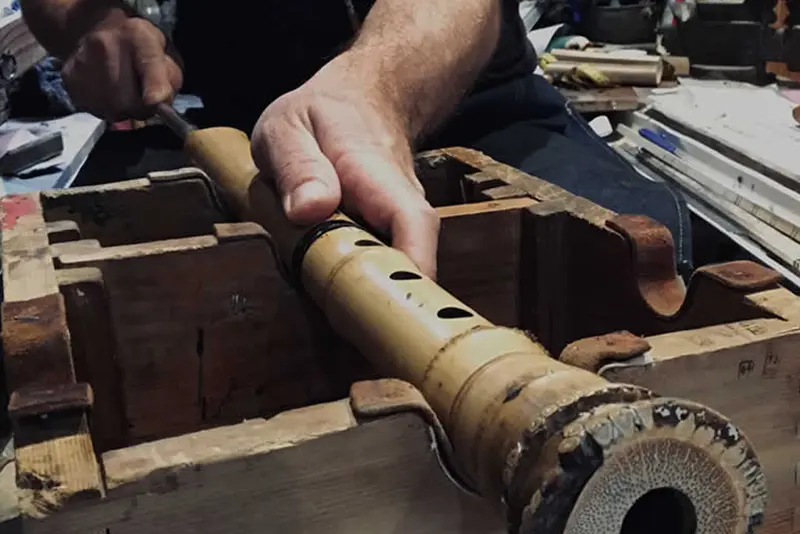
01 Feb How to Repair a Cracked Shakuhachi
A shakuhachi is a Japanese and ancient Chinese bamboo flute. It has a range of two full octaves and produces a beautiful, almost mystical sound. As beautiful as it is, the shakuhachi is both challenging to play and care for. Bamboo is considered impressively strong but prone to cracking and splitting when it travels outside its native environment due to its sensitivity to temperature and humidity changes. Left unaddressed, cracks in a shakuhachi will only worsen, leaving you with an unplayable instrument. If you notice a crack in your shakuhachi, it needs to be repaired sooner rather than later. But how do you fix a cracked shakuhachi?
Materials Needed
You will need a few things to repair your shakuhachi. You will need a wet cloth, a plastic bag, a binding cord (nylon, poly, or rattan), a razor knife, locking forceps and vise pliers, and glue or lacquer. You can get many of these supplies from your local hardware store or marketplace. You may need to turn to online sources to purchase the binding cord, depending on what type of cord you want to use and its local availability.
Steps for Repairing a Cracked Shakuhachi
Before you start diving into extensive, tricky repairs for a cracked shakuhachi:
- See if reintroducing moisture and humidity to the flute does the trick.
- Place a wet cloth on the crack and put the fabric and flute in a plastic bag.
- Let it sit overnight to see if that helps close the crack.
In some cases, letting the shakuhachi rest in a damp environment for a few days will be enough.
If that does not do the trick, you will need to bind it to repair the shakuhachi crack. Make sure your shakuhachi is clean, especially the damages you are improving. Apply a tight binding using your binding cord, using the forceps and pliers to stabilize the shakuhachi and manipulate the binding. Use the razor knife to cut the binding cord. Once you have bound the shakuhachi, you can seal the binding with glue or lacquer.
Tips and Tricks
Many people reach for superglue to repair a cracked shakuhachi, but that is a mistake. Superglue tends to get deep into the crack. While that may sound like a good thing, removing it is almost impossible and may prevent the crack from ever fully closing. Some people make grooves for the binding cord to sit in when repairing shakuhachi cracks. If you choose to do this, avoid making the groove too deep, as that can distort the bore.
Pay attention to the humidity you expose your shakuhachi to during the repair process. After you finish binding the shakuhachi, drying the bamboo a little to open the crack so you can use a filler to seal it may help.
Of course, monitoring humidity is essential to preventing future cracks as well. Do your best to maintain similar humidity levels to the bamboo’s natural climate. Keep your shakuhachi in a sealed plastic bag when you are not using it to prevent it from drying out. Use a “Dampit” or something similar (available at musical instrument stores) to keep your shakuhachi moist. Please keep it in a temperature-controlled room as well.
Conclusion
Because cracks in a shakuhachi are usually caused by the instrument drying out, reintroducing moisture to the instrument may be enough to repair the crack. If not, binding it to provide extra support and sealing it should help. Properly shakuhachi repair is critical if you want your instrument to sound beautiful and last as long as possible. While you could try to repair a shakuhachi crack on your own, the process requires technical precision to do it correctly. If you need to improve a cracked shakuhachi, bring it to our shakuhachi expert, Shawnee Schroeder, at Chikushin Shakuhachi for professional shakuhachi repair services.


